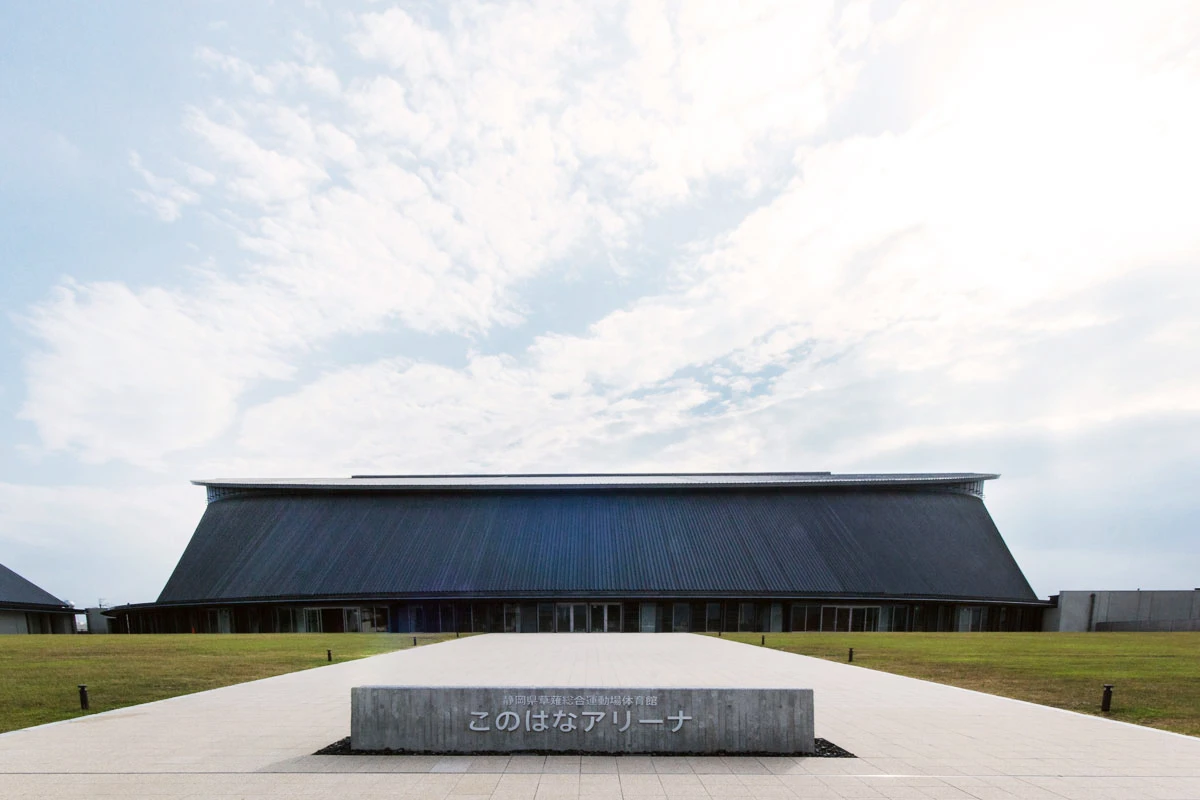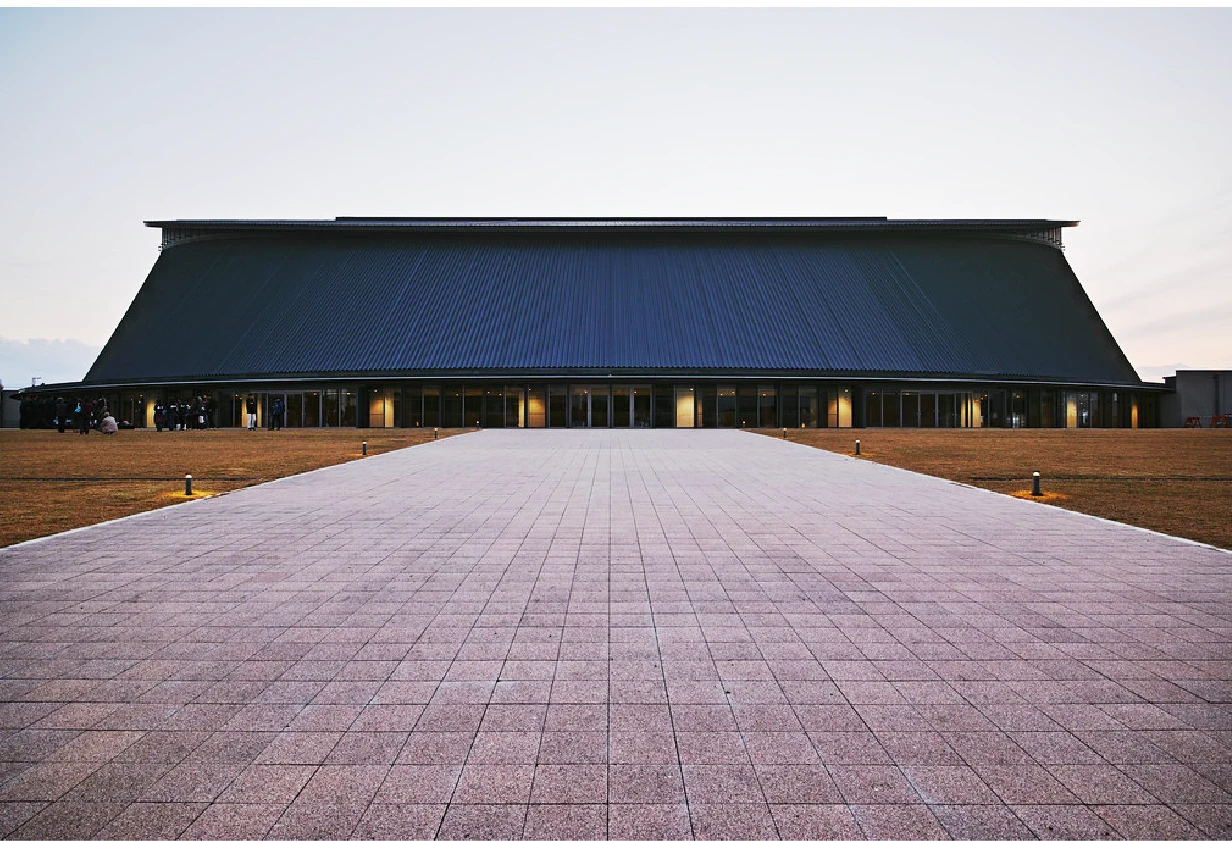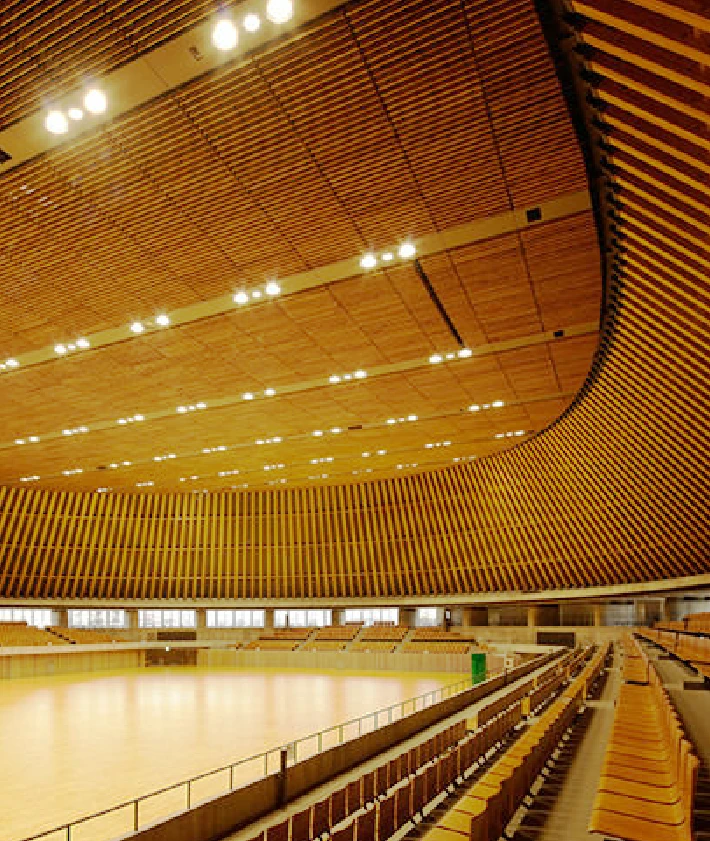Client
Confidential

Designing with Certainty
Client
Confidential
Typology
Institutional
Size
25,500 sqm
Services
VDC Integration and Documentation I In collaboration with Naito Architect & Associates
Location
Shizuoka Prefecture, Kusanagi, Japan
Year
2013 - 2015
Nestled in Shizuoka Prefecture, the Kusanagi Sports Complex Gymnasium stands as one of Japan’s largest contemporary wooden structures. Designed by Hiroshi Naito and completed in 2015, this architectural marvel reflects his belief that “architecture is the place where the lives of the people who live within it dwell…” Naito’s emphasis on durability and cultural context—creating landscapes that endure for generations—is evident in every curve and joint.
Aidea’s role centered on delivering Virtual Design & Construction (VDC) precision for the gym’s complex timber roof. At 25,000 m², the roof comprises 256 cedar bonded blocks—each 14.5 m long—arranged elliptically (angles varying from 45° to 70°) to support a 2,350-ton load. Using ArchiCAD, our team created a Generalized Design Language (GDL) component to ensure accuracy and cost-efficiency, producing a digital twin with zero-tolerance alignment—critical for smooth robotic assembly.

Beyond timber, Aidea coordinated with Tandem Engineering to model the elliptical reinforced concrete roof beam, providing structural reliability. To manage construction and structural loads, we incorporated short-term steel bracing, post-tensioned RD rings at the base, and precise quantity take-offs. Our digital model guided each phase, enabling safe, efficient, and on-time completion.

Our advanced modeling solutions addressed the project’s key challenges, including the precise placement of 256 cedar bonded blocks—each 14.5 meters long—angled between 45 to 70 degrees in an elliptical layout to support the 2,350-ton roof. Steel bracing and post-tensioning with RD rings ensured structural integrity during construction. We also trained a client team member to support digital migration. The result is a gymnasium that marries craft and technology, heritage and innovation, and form and function—all underpinned by a deep sensitivity to place and purpose. Through meticulous VDC workflows, Aidea helped realize a building that can thrive in an earthquake-prone region, fulfilling Hiroshi Naito’s vision of enduring, human-centered architecture.